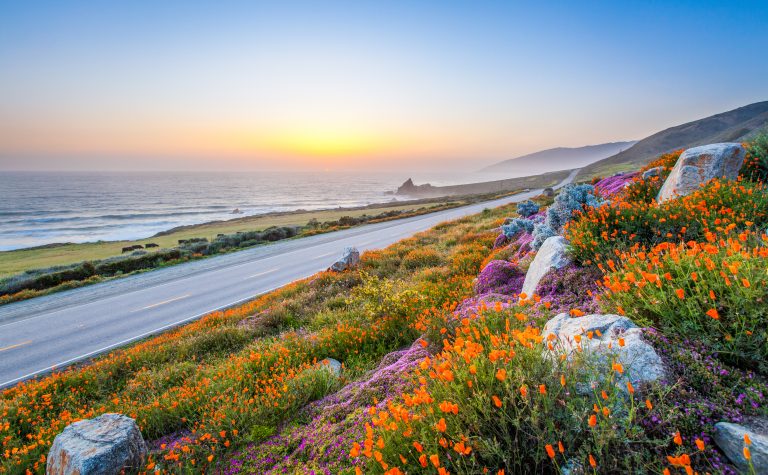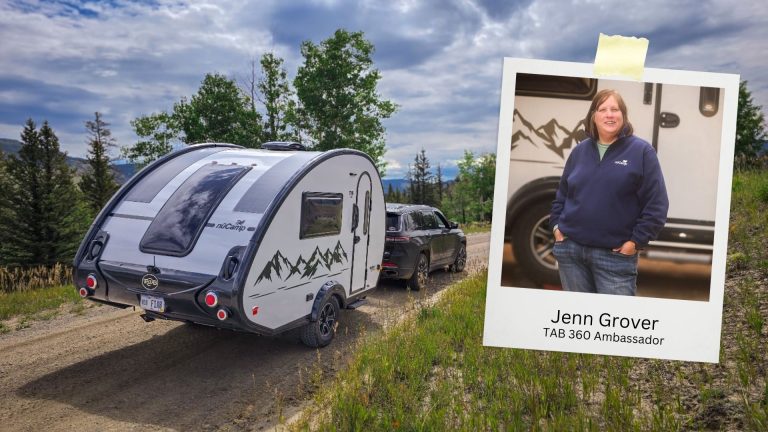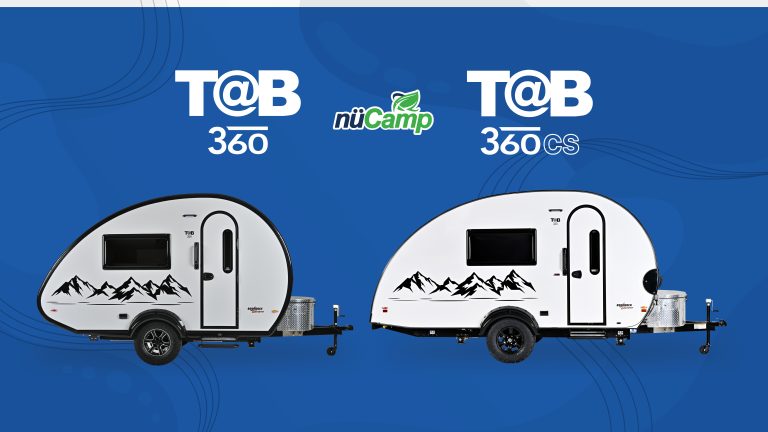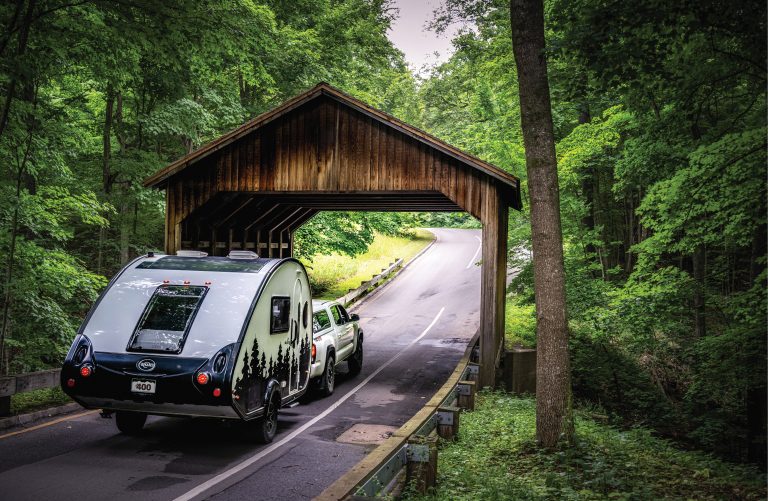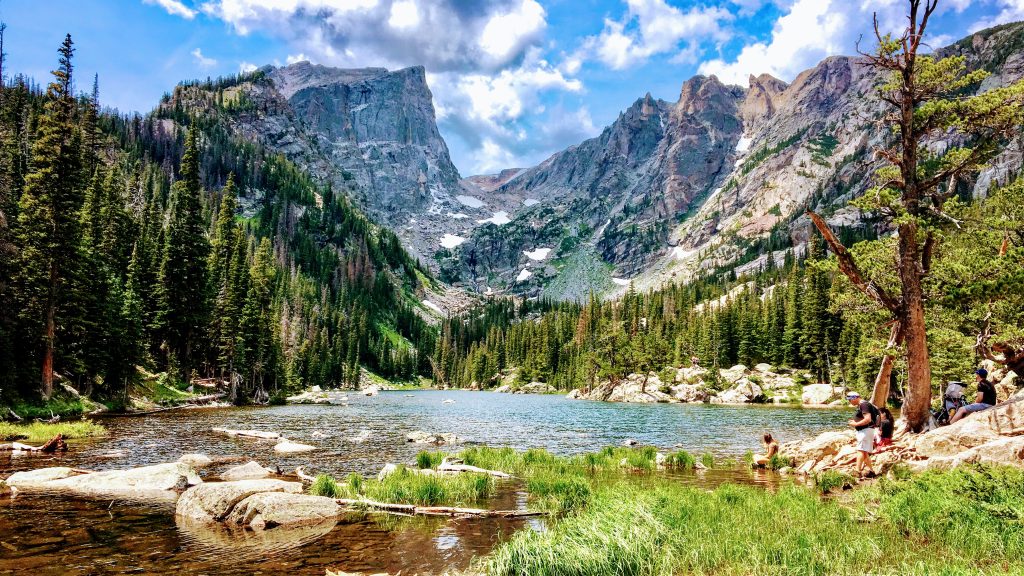Encompassing more than 265,800 acres, Rocky Mountain National Park is one of the jewels of the national park system.
Scenic vistas, majestic mountains, lakes, and streams teeming with fish, and miles of hiking trails and roadways make the park a destination of choice for more than 4.5 million visitors every year.
Visiting the park
Make your first stop at one of the four visitor centers in the park: Beaver Meadows Visitor Center, Fall River Visitor Center, Kawuneeche Visitor Center, and Alpine Visitor Center, where Park Rangers are available to answer questions and provide assistance. Two places of interest worth a stop are the Holzwarth Historic Site (on the west side of Rocky Mountain National Park) and Moraine Park Discovery Center (located along Bear Lake Road in Moraine Park).
The park has a variety of ranger-led free programs along with walks, talks, and activities. For more information and an updated schedule, visit this page. For the younger crowd, the Rocky with Kids page has more information on kid-focused activities. To make your park tour easier, take advantage of the two free shuttle service routes running during summer: the Bear Lake Route and the Moraine Park Route.
TABorado 2023
If you’re planning a trip to Rocky Mountain National Park, consider coordinating it with the annual TABorado. This year, the rally will be held in Granby, Colorado, from August 9 to 13. Created, organized, and hosted by nuCamp ambassadors Mandy Lea and Kendrick, it’s open to everyone in the nuCamp family: TAGs, TABs, and Cirrus Truck Campers. Visit the TABorado website for more details and to register.
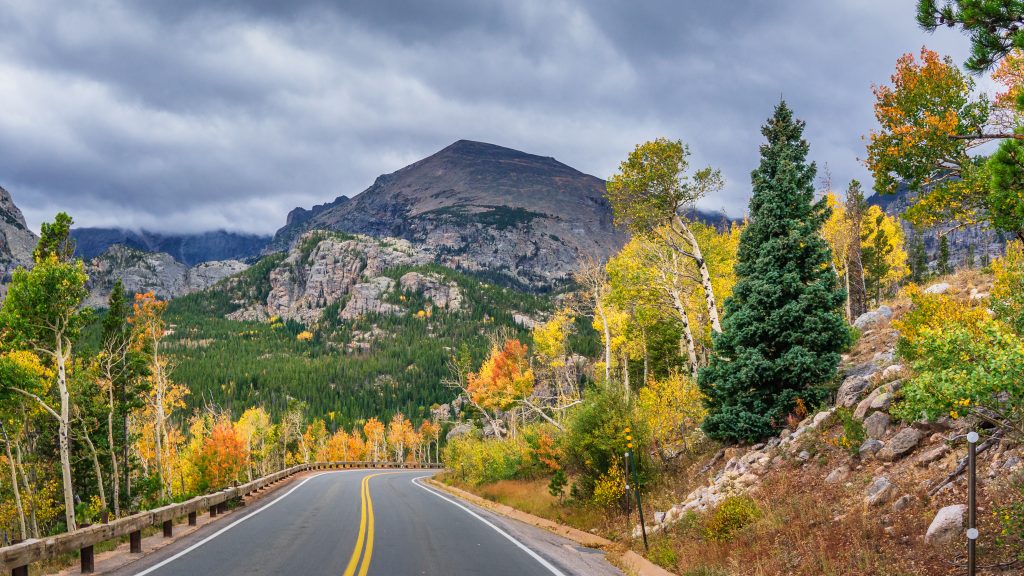
Traveling on Park Roads
The park’s road system starts at the lowland meadows, climbing to more than 12,000 feet, with numerous scenic vistas and overlooks giving you breathtaking views of the diverse terrain. Old Fall River Road, Bear Lake Road, and Trail Ridge Road each offer something unique for motorists. (Not used to mountain driving? This page has excellent information to keep your vehicle operating safely at higher altitudes.)
Old Fall River Road
Old Fall River Road was opened in 1920, making it the first auto route in Rocky Mountain National Park that provides access to the park’s high country. Along the nine-mile scenic drive that reaches 11,796 feet, you can take in views of Mount Chapin and Chasm Falls as you move through sub-alpine and alpine life zones. The roadway is dirt and gravel, and given its winding, the narrow aspect with sharp switchbacks is suitable only for most passenger vehicles. AWD and 4WD vehicles are advised, while vehicles longer than 25 feet in length and vehicles with trailers are prohibited.
Bear Lake Road
Bear Lake Road is one of the most visited areas of Rocky Mountain National Park. The 9.2-mile paved road begins at 8,200 feet above sea level and climbs to 9,475 feet when it reaches the Bear Lake Parking Area and Trailhead. Key stopping areas include the Moraine Park Area, Sprague Lake, the Park and Ride Parking Area, Bierstadt Lake Parking Area and Trailhead, and the Glacier Gorge Parking Area and Trailhead.
Trail Ridge Road
Extending 48 miles between Estes Park on the park’s east side and Grand Lake on the west, Trail Ridge Road (U.S. 34) is North America’s highest continuously paved road. It’s also a nationally designated All-American Road and one of 10 America’s Byways in Colorado. Eleven miles of it are above the tree line at an elevation near 11,500 feet. As you travel the roadway, you’ll see montane forests of aspen and ponderosa pine give way to fir and spruce forests and, ultimately, the alpine tundra.
While it offers a panoramic view of the Rockies, Trail Ridge Road does lack shoulders and has few guardrails. If the road is closed due to unsafe road conditions or for the season, there are alternate routes between Estes Park and Grand Lake: one via U.S. 40 and one via Colorado 14. For up-to-date information on the status of Trail Ridge Road, call the recorded phone line at 970-586-1222.

Hiking on Park Trails
Rocky Mountain National Park has 355 miles of hiking trails, ranging from half a mile to close to 10 (one way). The park has the perfect trail for any skill level, from flat lakeside strolls to steep mountain peak climbs. Lake, waterfall, and summit hikes are among the most popular choices. Make your choice based on your fitness and experience levels, bearing in mind that elevations that range from 7,500 to over 12,000 feet can cause altitude problems.
There are also accessible trails, which are good choices for those adjusting to the higher elevations and groups with young children or anyone with visual or physical impairments.
Fishing in Park Waterways
Rocky Mountain National Park is a popular destination for sport fishing, with species including brown, brook, rainbow, and cutthroat (Colorado River and Yellowstone) trout, suckers, and sculpins. If you’re planning to challenge those finned inhabitants, there are a few things you need to do:
- Follow Rocky Mountain National Park’s Disinfection Guidelines on this page to protect the fish and their waters.
- Have a valid Colorado fishing license (required for all persons 16 or older).
- Follow all special regulations. Persons 12 years old or younger may use bait in waters open to fishing, except in designated catch and release areas.
You can purchase licenses and Habitat Stamps from license agents at shops throughout the State of Colorado, online, or by phone at 800-244-5613. Visit this page for more information and regulations about fishing in Rocky Mountain National Park. Details about fishing season dates and license fees are available here.
Biking on Park Roadways
Bicyclists (including those on e-bikes) can explore the park on all roads open to motor vehicles (paved and dirt) unless otherwise posted. Since roads are narrow with few or no shoulders and lack designated bicycle lanes, cyclists need to ride with care. While bicycles aren’t available for rent in the park, nearby communities do offer bicycle rental, repair, and sales.
The Trail Ridge Road and Old Fall River Road are open to bicyclists from April 1 to November 30 (except during maintenance and emergency closures). After autumn road closures, Endovalley Road, High Drive, Upper Beaver Meadows Road, and all park campgrounds (closed loops) are open to bicycles, while Fern Lake Road, Wild Basin Road, and Twin Sisters Trailhead Access Road are closed to bicycles.
A “per person” entrance pass or an annual or lifetime pass, which covers the owner and up to three additional cyclists, is required, with passes requiring photo identification to verify ownership. A timed entry permit is not required for visitors entering the park by bicycle. See the webpage for rules and regulations regarding biking in the park.
Climbing the Park Peaks and Rock Formations
With its wide variety of peaks and granite rock formations, it’s no surprise that the park has been a destination for climbers since the 1800s. Take your pick from traditional alpine climbing, big wall, and bouldering to snow and ice, and mountaineering. Information about classic, most popular, and highest-rated climbing routes can be found on the Mountain Project website.
No permit is required for climbing and mountaineering, but if you’re planning an overnight trip, you must have a backcountry wilderness camping permit to camp or bivouac. See the webpage for rules and regulations regarding climbing in the park.
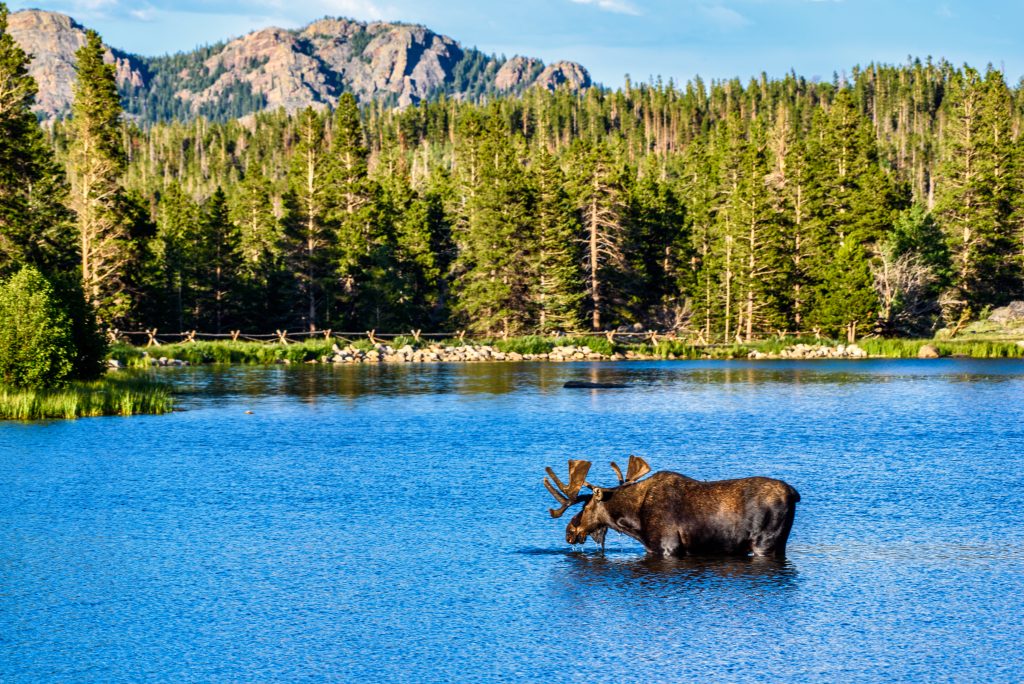
Viewing Wildlife in the Park
If your idea of a fun activity is to spend time viewing wildlife, then Rocky Mountain National Park is the place for you.
What animals call the park home? Elk, bighorn sheep, mule deer and moose, just to name a few. The park has more than 60 other species of mammals, 280 recorded bird species, six amphibians, 11 species of fish; countless insects (including a surprisingly large number of butterflies) and one lone reptile: the harmless garter snake.
For the best photographs, follow the tips on this page. But don’t try to get up close and personal with these inhabitants. The park recommends keeping at least 75 feet or two bus lengths away from all wildlife in the park and a minimum of 120 feet or three bus lengths away from more dangerous animals like black bears, moose, and mountain lions. Also, note that harassing or feeding wildlife is illegal in all national parks.
One of the best places to view wildlife is the Sheep Lakes Information Station in Horseshoe Park. The parking lot is open year-round, 24 hours daily, while the Information Station is open and staffed during the summer season from 9:30 a.m. – 4:30 p.m. daily.
What to know about potential traffic delays
Now that you have some ideas of what to do while at Rocky Mountain National Park, let’s address the major construction project now underway that can cause traffic delays and the newly implemented timed entry permit system. All vehicles will need a Timed Entry Permit Reservation (a Park Access or Park Access+ Timed Entry Permit) and a park entrance pass (including a 1-day or 7-day Vehicle Pass or an America the Beautiful Interagency Annual, Senior, Access, Military, or 4th Grade Pass).
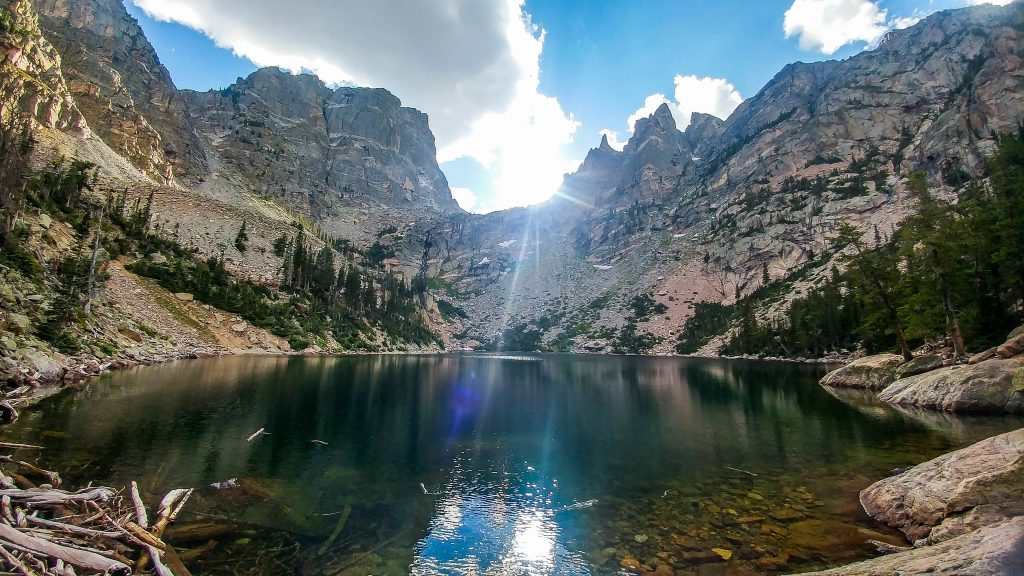
Enjoy your trip
We hope you find this guide helpful for your future trip to Rocky Mountain National park! Remember to pack your camera, hiking boots, and a sense of adventure as you embark on a jounrey through the stunny Rockies.
Recent Articles
